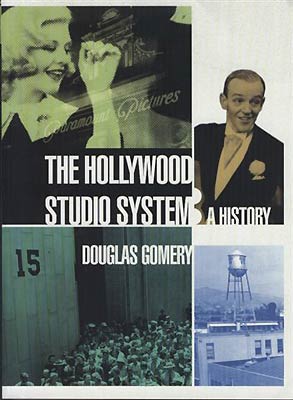Book Review
The Hollywood Studio System – A History
By Douglas Gomery
Bfi (British Film Institute) Publishing (2005)
336 pages, Softback, ISBN 1-84457-064-9; Hardback, ISBN 1-84457-023 -1
Amazon UK Amazon US

A warning there is virtually nothing about Hollywood composers in this book only one or two references to music for the silent cinema. Although the name Max Steiner appears in the index, reference to the ‘father of film music’ does not exist as stated on page 138 in a discussion about the production of Casablanca. What we do learn about Casablanca is that its premiere at the Hollywood Theatre, timed for Thanksgiving 1942, was a smash hit. It played to 31,000 admissions in its first week. ‘The theatre had a capacity of 1,500 and even standing room was sold out. It played at the theatre for 10 weeks and grossed $255,000 – both records. Furthermore by the middle of February 1943, Casablanca had opened in 200 theatres across the USA and by the end of 1943 had earned $3,700,000.’ [After Gone with the Wind, Casablanca retains the record for the most popular film in America in terms of ticket sales.]
This sort of business information is at the heart of this book. Dull, boring reading? Not a bit of it! It includes a mine of information about the major (and minor) studios, their stars, directors and producers but more importantly it puts the studio system in its proper business perspective – i.e. – the Hollywood studios as just the factory components of powerful businesses that also included vast chains of theatres (in the case of the leading major studios) and global distribution networks.
Douglas Gomery divides his book into three historical parts. The first is concerned with ‘The Rise of the Studio System 1915-30’ and shows how these businesses were formed and consolidated – during this period the studios ranked thus:
Paramount
Loew’s/MGM
Fox
Warner Bros
RKO and the Minors: Universal, Columbia and United Artists.The second part goes on to cover ‘The Classic Studio Era 1931-51’ when the studios were at their apogee producing hundreds of films every year before the threat of declining audiences (because of urbanisation and competition from TV etc). Although the ranking was virtually the same (except that Gomery couples Disney with its distributor RKO and to the minors, and he adds the B-film factories like Republic and Mongram [noted for churning out westerns and serials etc]), this period also saw the sorry demise of RKO- Radio, destroyed by the mismanagement and regrettable taste of the reclusive Howard Hughes who considered the studio to be his play toy.
The last section covers ‘The Modern Hollywood Studio System’ and how the studios were taken over by big business including Rupert Murdoch (Twentieth Century Fox) and huge multi-media conglomerates such as Time Warner AOL (Warner Bros) – these businesses even embracing major TV networks. The ranking now being:
Universal
Paramount
Warners
Twentieth Century Fox
Disney
Columbia and Sony PicturesThere are also sections on the Hays Office and the Academy and unions and agents and a fascinating glimpse on the rise of Lew Wasserman the Hollywood agent who took Universal into the major league of studios and reinvented the studio system. It was Wasserman who bucked the studio trend and negotiated a deal whereby James Stewart would take a share of the profits of Anthony Mann’s western, Winchester 73 rather than a salary and it set a precedent that resounded through the studios.
Nitpickers will find a few literals along the way but this is a fascinating and very valuable book putting the dream factories in their proper business perspective.
Ian Lace
N/A
Return to Reviews Index